Spectacle and care went into making ‘The Last of Us’ look and feel grounded, and the show gets an impressive amount right. Even so, sharp eyes can still catch small production hiccups, continuity slips, and background details that do not line up with what the story is telling you.
These glitches do not change how the story lands, but they are fun to spot once you know where to look. If you enjoy picking apart scenes to see how television is put together, the following moments offer clear, teachable examples of how tiny details can slide past even a well run set.
Crew members visible on the snowy ridge
 HBO
HBOIn the mid season stretch when Joel and Ellie trek through winter country, there is a wide shot where figures that do not belong to the story appear on the far slope. The cluster sits off to one side of the frame and moves unlike any character in the scene, which gives away that you are probably seeing camera operators and safety staff.
The moment is quick, and later versions of the episode were cleaned up, but the first broadcast let the shapes hang there long enough for viewers to notice. If you pause on the bridge approach and scan the snowline, you can still understand exactly where the set boundary ended and the crew staging began.
Modern Alberta road furniture in a Kansas City setting
 HBO
HBOThe action that relocates Joel and Ellie to Kansas City was filmed in Calgary, which means the production had to hide Canadian street hardware. In a few street runs you can catch curbside posts and municipal fixtures that match Alberta designs rather than Missouri standards, including parking posts and pedestrian button housings that do not match local Kansas City stock.
Most of these items sit at frame edges during vehicle chases, which makes them easy to miss in motion. Freeze on the approach into downtown and check the corners near crosswalks to see the difference in signal head shapes and mounting plates that give the filming location away.
Anachronistic vehicles during the 2003 prologue
 HBO
HBOThe prologue sets the outbreak at the start of the century, so any vehicle model released after that year should not be around. During the highway escape, background traffic includes a few body styles and headlight signatures that did not hit the market until later, such as updated pickups and crossovers that are too new for the date.
These brief background passes happen as the truck weaves through stalled lanes. If you step through frame by frame, you can spot taillight clusters and grille designs that belong to newer production years than the story’s timeline allows.
Snow coverage continuity during the river approach
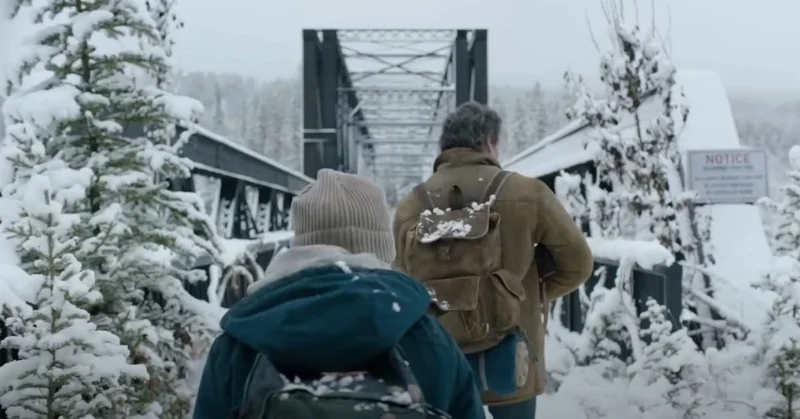 HBO
HBOIn the stretch that leads to the big dam reveal, the ground alternates between lightly dusted and fully packed from shot to shot. Tracks that are visible in one angle vanish in the reverse, and shrubs drift in and out of snow cover even though only a few seconds pass in the story.
This kind of mismatch often comes from shooting the same beat hours apart while weather shifts. Look at the boot prints beside fence posts and compare them across the conversation beats, and you will see how the surface resets between takes.
Backpack tape that jumps sides between cuts
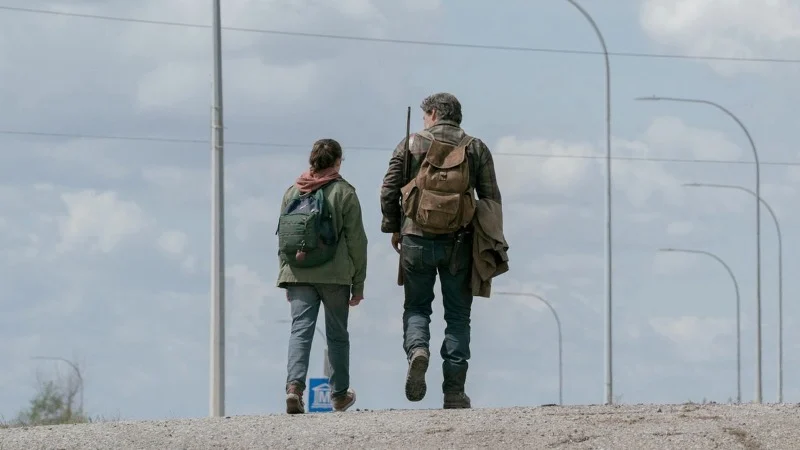 HBO
HBOEllie patches her pack with tape that becomes a handy visual marker during close ups. In a few scenes the tape shifts position between angles, which makes the same strap look patched on opposite edges depending on the cut.
You can verify the switch by watching a dialogue exchange where the pack is first slung over one shoulder then set down. The adhesive patch appears on the viewer’s left in one angle and on the viewer’s right after the cut, even though the pack did not rotate on screen.
Magazine round counts that do not match the firing
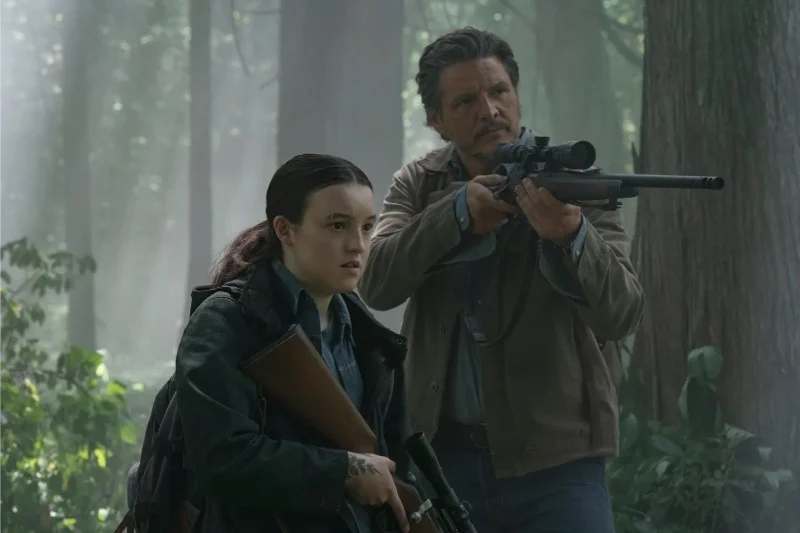 HBO
HBOAction beats keep the pace brisk, but the math on ammunition is not always consistent. In several firefights the number of shots fired exceeds what the on screen magazine can hold, with no reload shown to bridge the gap.
To see this clearly, pick a sequence where Joel uses a standard capacity pistol, count the audible and visible shots, and compare that tally with the capacity of the magazine type the prop is meant to represent. The cut pattern skips a reload that would be required to reach the final shot count.
Changing blood patterns on Joel’s jacket
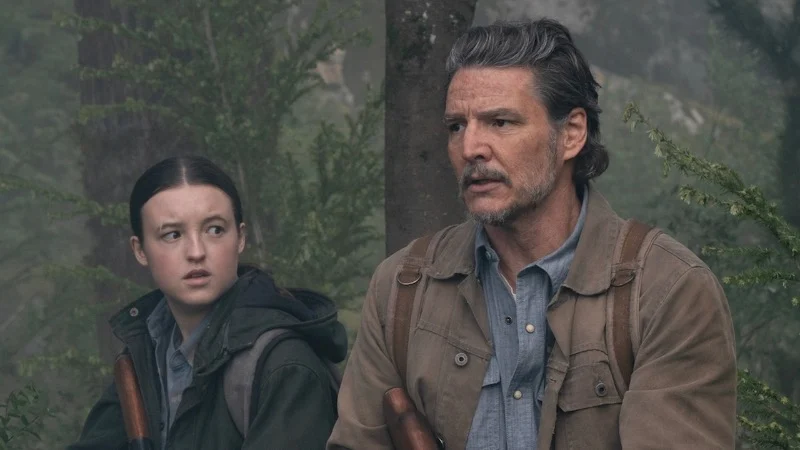 HBO
HBOAfter injuries that leave visible stains, Joel’s outer layer serves as a continuity anchor. Across consecutive cuts, the size and placement of blood on the jacket sleeve and chest shift, growing or shrinking without an intervening action to explain the change.
The easiest way to spot this is to track a single dark patch through a short walk and talk. In one angle the stain touches a seam line, then in the next angle it sits a few centimeters away, which signals that separate takes with different reset levels were cut together.
Flashlight beams that do not match the light on faces
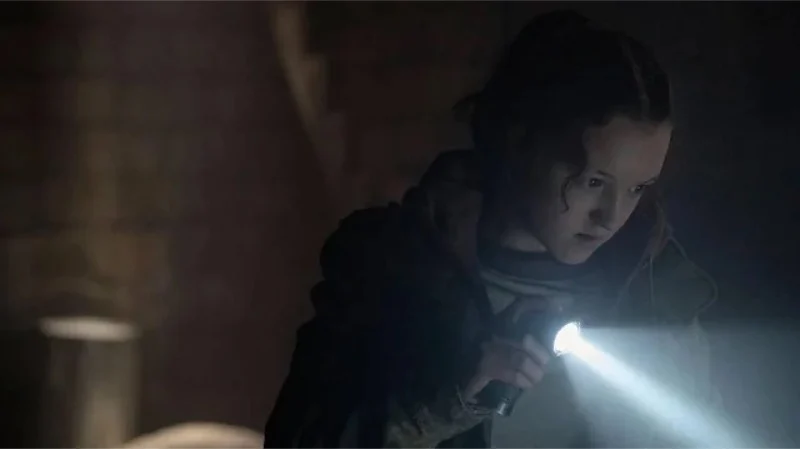 HBO
HBOIn the museum sequence and other dark interiors, characters use handheld lights to navigate. There are moments where the beams swing away from faces while the faces stay evenly lit, which tells you that off camera fill lights kept exposure consistent even when the props would have left the characters in shadow.
Watch for this when characters sweep a room. The cone of light lands on a wall or the floor, yet skin tones remain bright and shadow edges on cheeks do not change, which reveals the presence of additional lighting that the story world does not provide.
Window damage that resets between angles
 HBO
HBOBroken glass is great for atmosphere, but it is difficult to keep perfectly consistent across a long scene. In a safehouse conversation, cracks and missing panes behind the actors rearrange between shots, which makes the pattern of breaks jump in small but noticeable ways.
You can check this by noting a distinctive spider crack near a window latch in the wide shot, then looking for the same crack in the reverse. The fracture either shrinks or moves, showing that the production reset the glass for a later take and spliced the two setups together.
Street sign clutter that reveals the filming route
 HBO
HBOWhen the show needs to fake a different city, art teams redress streets with new signage. A few wide shots still hold extra signposts and mount scars that do not fit the represented location, like leftover holes and brackets on poles that do not match the new sign that was added for the scene.
Look along the sidewalks during driving plates and you will see double mounts or mismatched pole heights that hint at a different traffic plan than the one the story asks you to believe. These are quick flashes, but once you spot them the geography of the filming route becomes clear.
Share the moments you have spotted in ‘The Last of Us’ that belong on this list in the comments.

.jpeg)
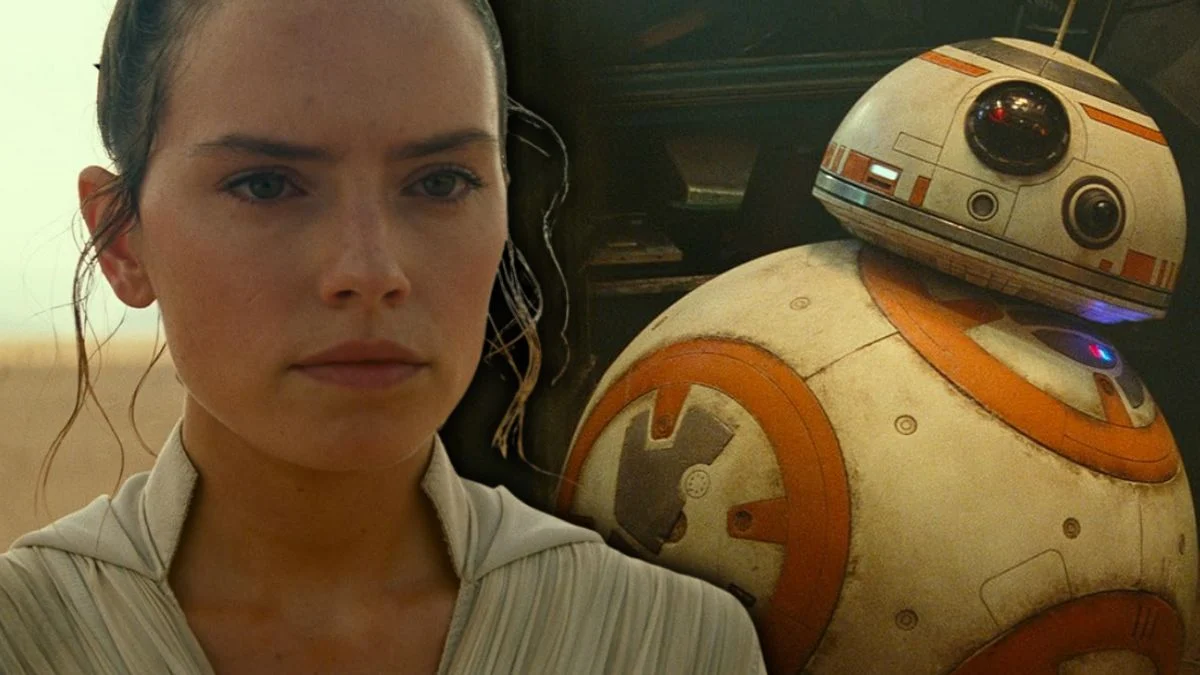
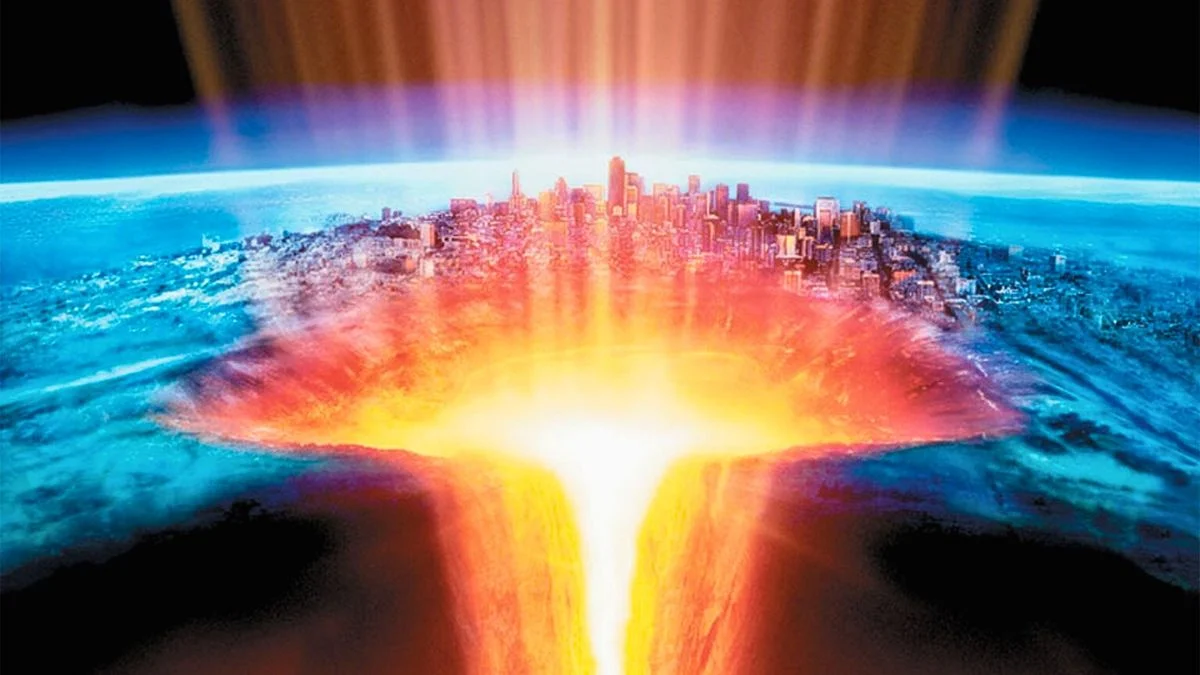

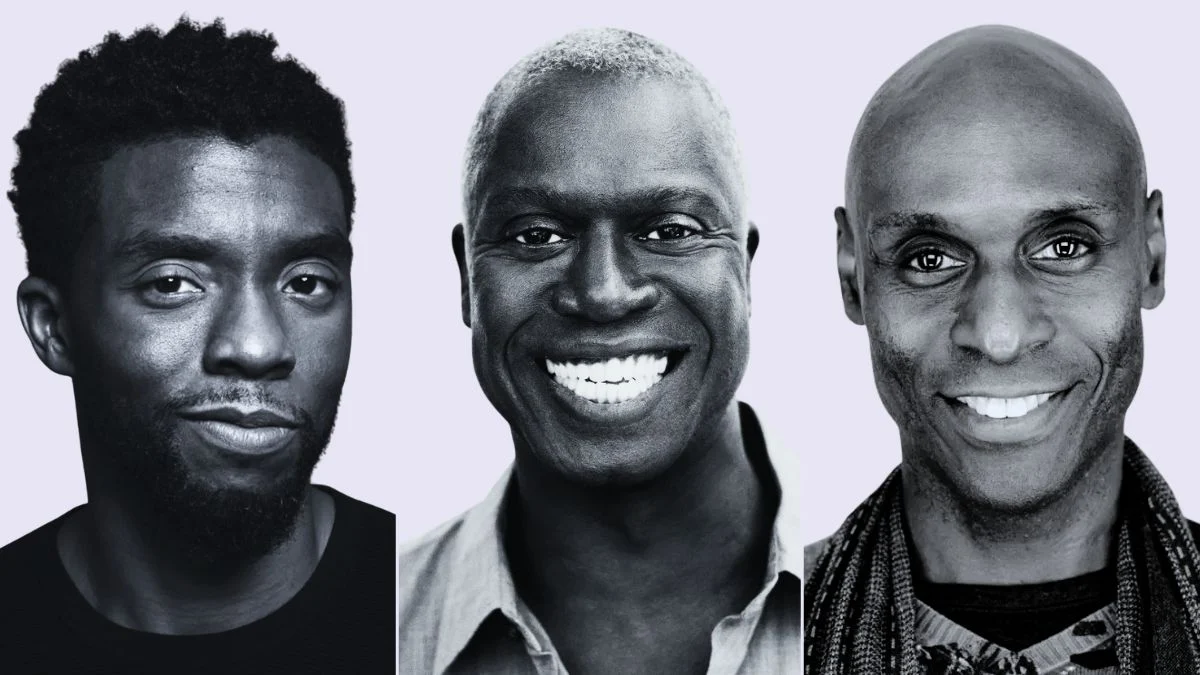

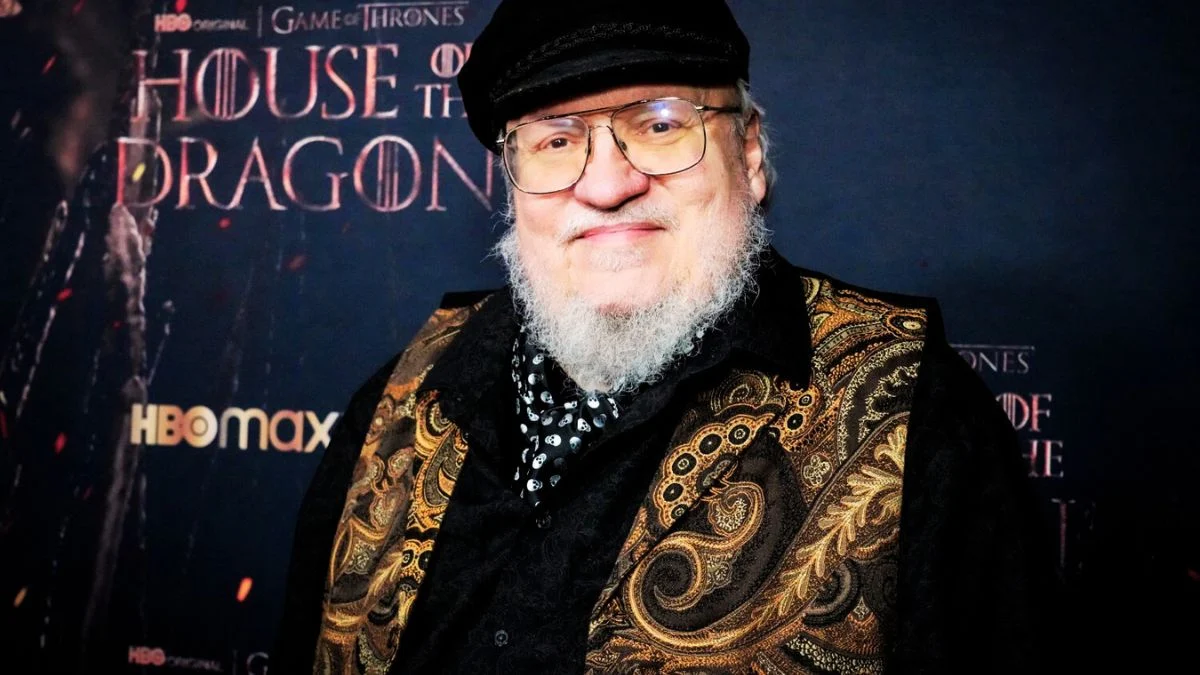

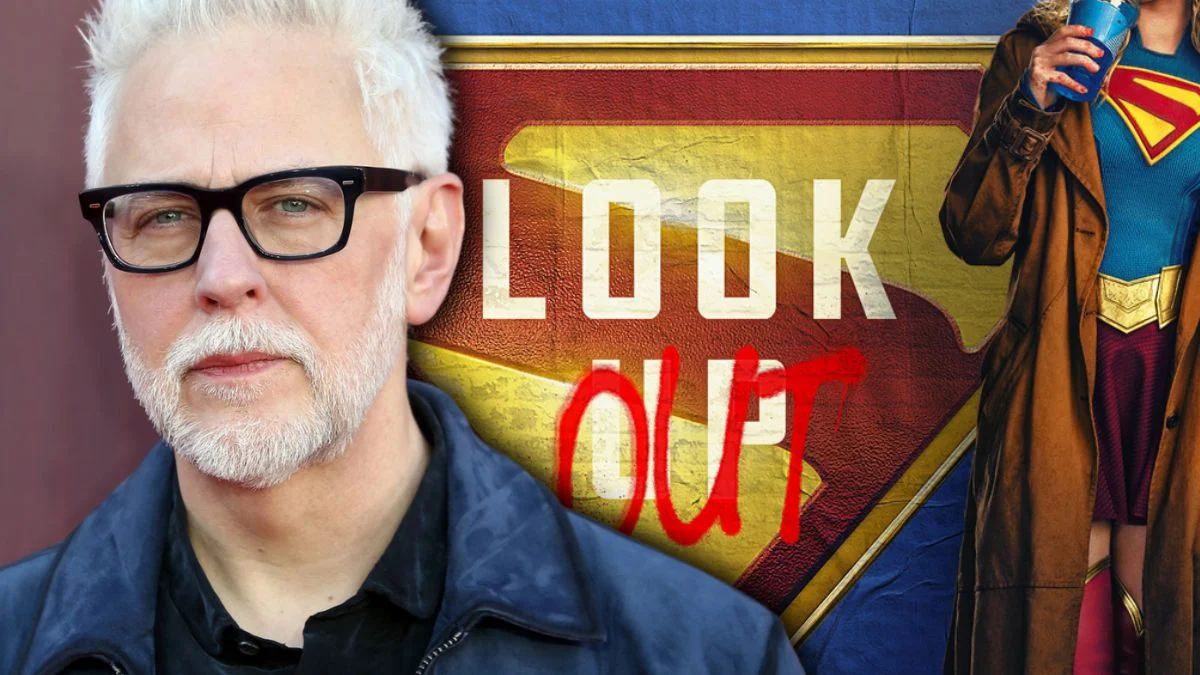
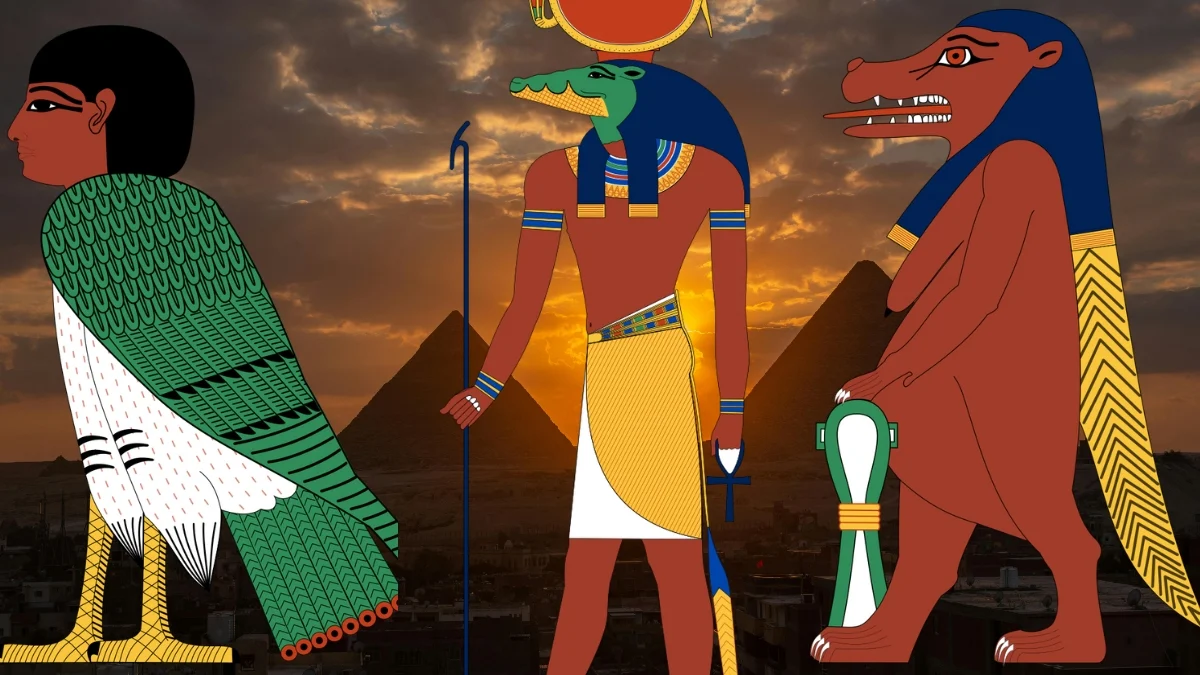
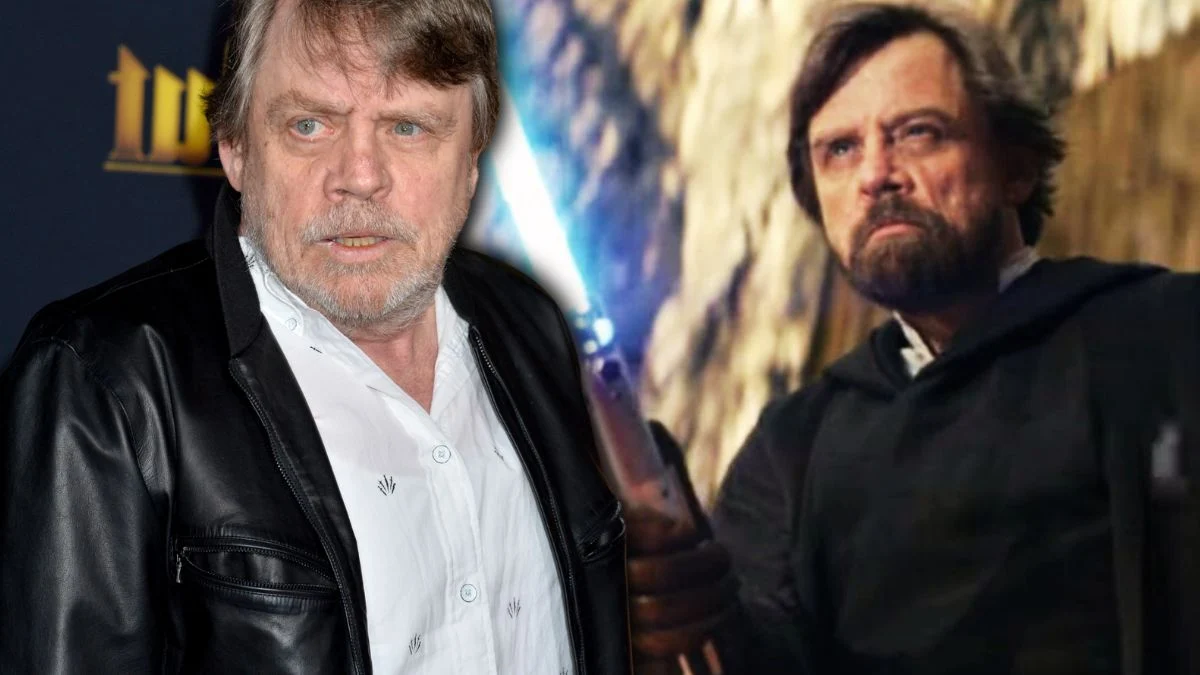

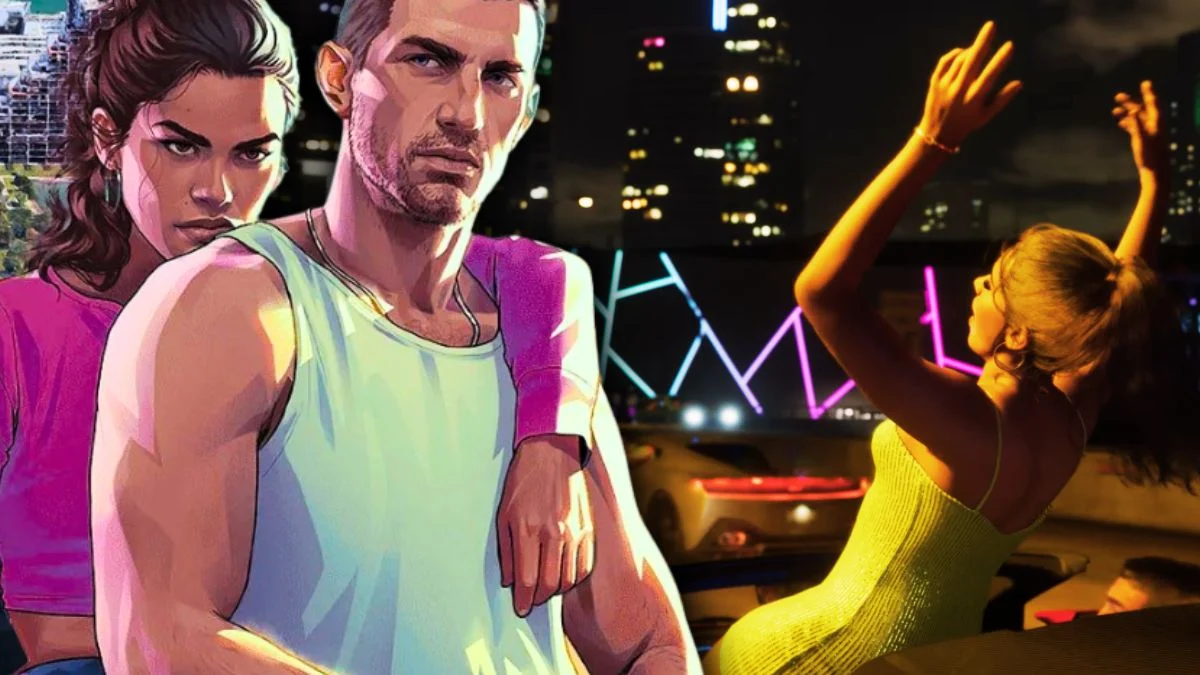


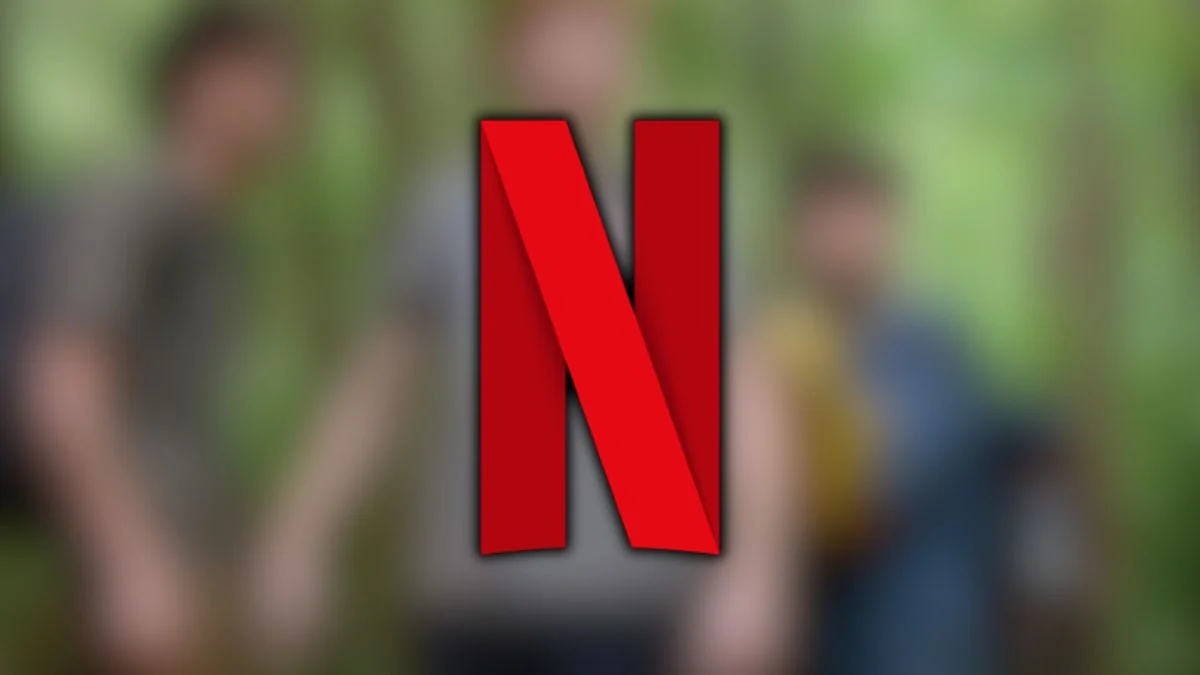

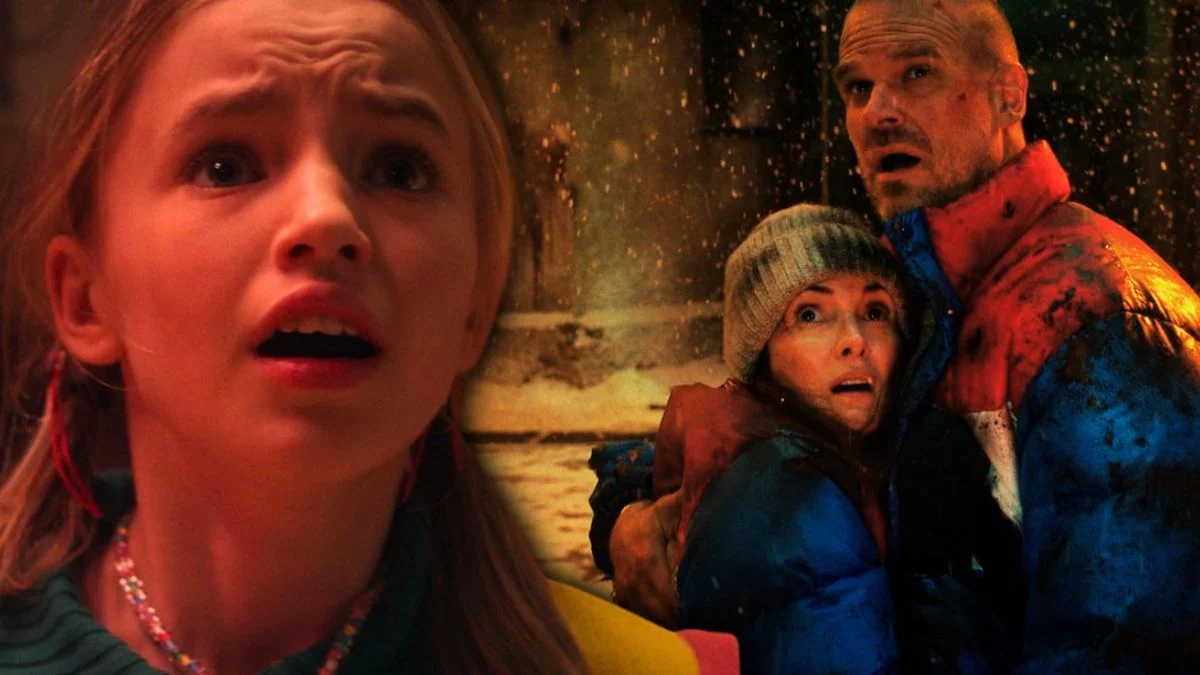

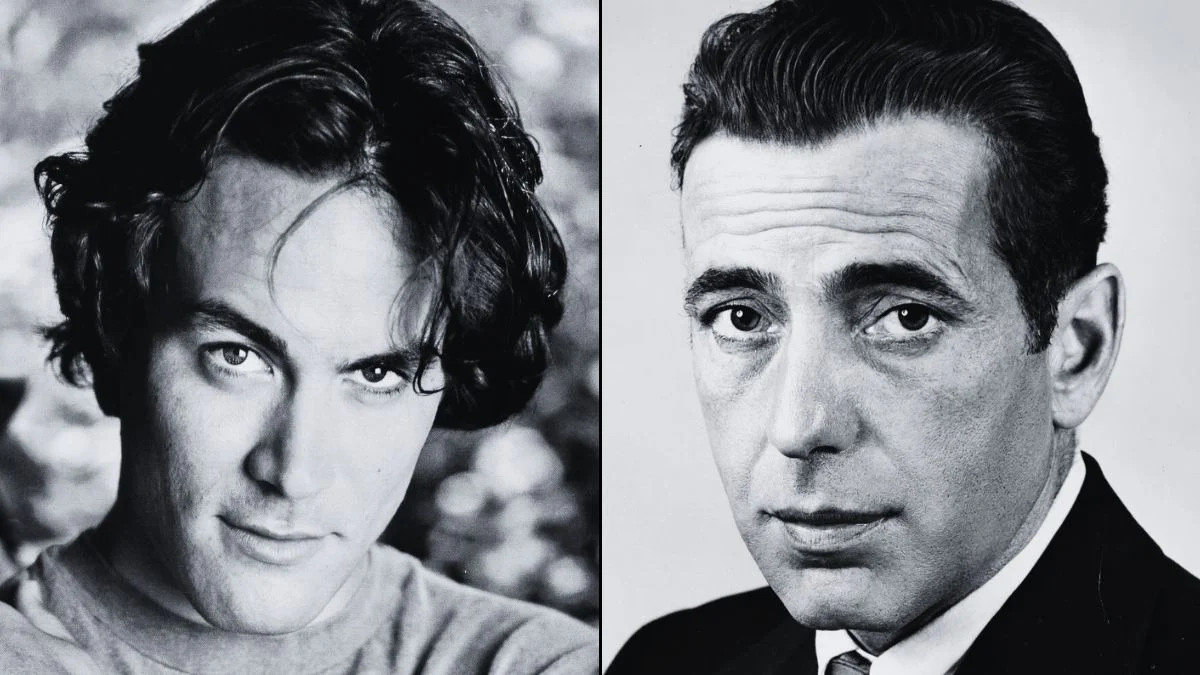




.jpeg)













 English (US) ·
English (US) ·